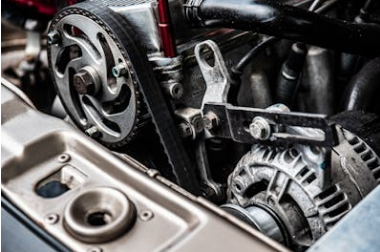While consulting for a construction company last year, I encountered a revealing scenario. The site manager, Tom, had a perfectly organized storage room for crane parts—everything labeled, cataloged, and stored with precision. Yet, the company still faced frequent delays and operational headaches. The problem wasn't organization; it was their approach to spare parts management.
If you're managing crane operations, this might sound familiar. You think you're doing everything right, but something isn't working. Let's explore why your current crane parts strategy might be failing and how to fix it.
The "Just in Time" Misstep
Many companies pride themselves on lean operations, keeping minimal crane parts in stock and ordering only when needed. While this approach works in manufacturing consumer goods, it's a disaster for crane maintenance. I've seen operations come to a standstill while waiting for critical crane parts to arrive from their supplier.
Consider this: When a crane breaks down, every hour of downtime costs thousands in lost productivity. The savings from minimizing inventory are insignificant compared to the financial impact of weeks-long delays for specialized components.
The Risk of a Single Supplier
Another common mistake is relying on just one crane parts supplier. It feels safe—you've built a relationship, they understand your equipment, and their prices seem reasonable. But this comfort zone can be dangerous.
I recall working with a port facility that had used the same crane parts supplier for ten years. When that supplier faced supply chain disruptions during a critical repair, the facility had no backup plan. They learned the hard way that supplier diversification is a crucial risk management strategy, not just business jargon.
Shifting to Predictive Maintenance
If you're constantly scrambling to order crane parts after a breakdown, you're already behind. This reactive approach is like waiting for your car to break down on the highway before considering maintenance. Forward-thinking crane operators are adopting predictive maintenance, using data and regular inspections to anticipate component failures.
Building a Better Strategy
A successful crane parts strategy involves building relationships with multiple suppliers while maintaining a well-planned inventory of critical components. Focus on identifying parts that frequently fail or have long lead times, and ensure you have these essentials on hand. This isn't about stockpiling everything—it's about intelligent inventory management based on real-world needs.
The Human Element
Effective spare parts management isn't just about spreadsheets and inventory levels; it's about people. Your maintenance team needs confidence in their resources to perform effectively. Your crane parts suppliers should feel like partners in your success, not just vendors.
I've seen maintenance teams transform when they shift from frantically chasing parts to executing planned maintenance with confidence. Stress levels drop, efficiency improves, and everyone feels more in control.
Taking Action
Begin by analyzing your current crane parts strategy. Identify the gaps, the stressors for your team, and the parts that consistently cause delays. Use these insights to develop a more robust approach.
The goal isn't to stockpile every possible part but to have the right parts available when you need them most. This requires understanding your equipment, usage patterns, and maintenance needs.
Your crane parts strategy should operate like a well-oiled machine, not a constant firefight. When executed correctly, it becomes a competitive advantage, not a source of stress. Invest the time to build a comprehensive approach, and you'll see the difference in your operations and bottom line.
The most successful crane operations treat their Manitowoc crane parts as a living system—constantly evolving, adapting to new challenges, and improving based on experience. Isn't it time your strategy did the same?
